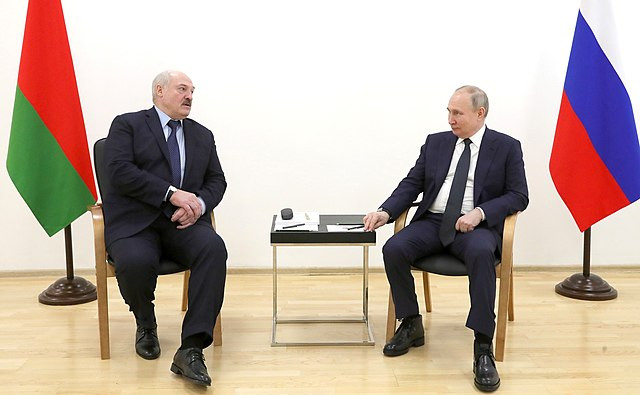Belarusian President Alexander Lukashenko announced on Tuesday that "several dozen" Russian nuclear warheads have been deployed in Belarus, further solidifying the alliance between Moscow and Minsk while raising alarms across the region. The announcement came just days after Russian President Vladimir Putin and Lukashenko signed a security pact strengthening their countries' mutual defense commitments.
"I brought nuclear warheads here. Not a few dozen of them," Lukashenko declared on his Telegram channel, dismissing skeptics who doubted the move. "Many people write, 'Oh, it's a joke, no one brought anything in.' They did. And the fact that they think it's a joke means they missed it. They didn't even notice how we brought them in."
The deployment is part of the broader Union State treaty between Russia and Belarus, which outlines mutual defense obligations and allows for the use of Russian tactical nuclear weapons stationed in Belarus. Putin emphasized that while the weapons are now in Belarus, control remains firmly with Moscow.
"I'm sure that the treaty will ensure the security of Russia and Belaru," Putin said during a televised address. The Russian president has also updated his country's nuclear doctrine, lowering the threshold for nuclear weapons use, including in response to conventional attacks supported by nuclear-armed nations.
The decision to deploy nuclear warheads in Belarus has drawn sharp criticism from Western nations and Belarusian opposition leaders. Franak Viačorka, a senior adviser to exiled opposition leader Sviatlana Tsikhanouskaya, called the treaty "another betrayal of Belarusian independence." He added, "By aligning so closely with Putin, [Lukashenko] isolates Belarus from the West and burns chances to drag Belarus out of Russian claws."
The presence of Russian nuclear weapons in Belarus marks the first such deployment since the country relinquished its Soviet-era arsenal in 1996 as part of the UN Treaty on the Non-Proliferation of Nuclear Weapons. Critics argue that this move undermines decades of arms control agreements and escalates tensions with NATO and neighboring countries.
Adding to these concerns, Lukashenko has requested the deployment of Russia's Oreshnik intermediate-range ballistic missile in Belarus by 2025. Capable of traveling at speeds exceeding Mach 10, the Oreshnik poses a significant challenge to current missile defense systems. Putin touted its capabilities, claiming that "modern air defense systems that exist in the world cannot intercept such missiles."
The militarization of Belarus comes as Eastern Europe grapples with increased instability. NATO officials have expressed concern about the strategic implications of hosting Russian tactical nuclear weapons so close to alliance borders. While Moscow insists the move is defensive, analysts warn it could provoke further escalation in an already volatile region.
The announcement follows a series of moves by Russia to bolster its military presence in Belarus. Putin first revealed plans to station tactical nuclear weapons there in March 2023, and by June, Lukashenko claimed the warheads had begun arriving, though this has not been independently verified until now.
Belarusian officials are reportedly deliberating where to store the Oreshnik missiles, with Lukashenko hinting they may be stationed at former Soviet strategic missile sites. Such a decision would further entrench Belarus's role as a key Russian ally in its broader geopolitical strategy.
The timing of the nuclear deployment coincides with heightened tensions between Russia and the West. Moscow recently escalated its nuclear rhetoric after the U.S. approved Ukraine's use of longer-range Army Tactical Missile Systems (ATACMS) against Russian targets. The move underscores the deepening proxy conflict in the region, with Belarus now serving as a critical player in Russia's strategic calculations.






